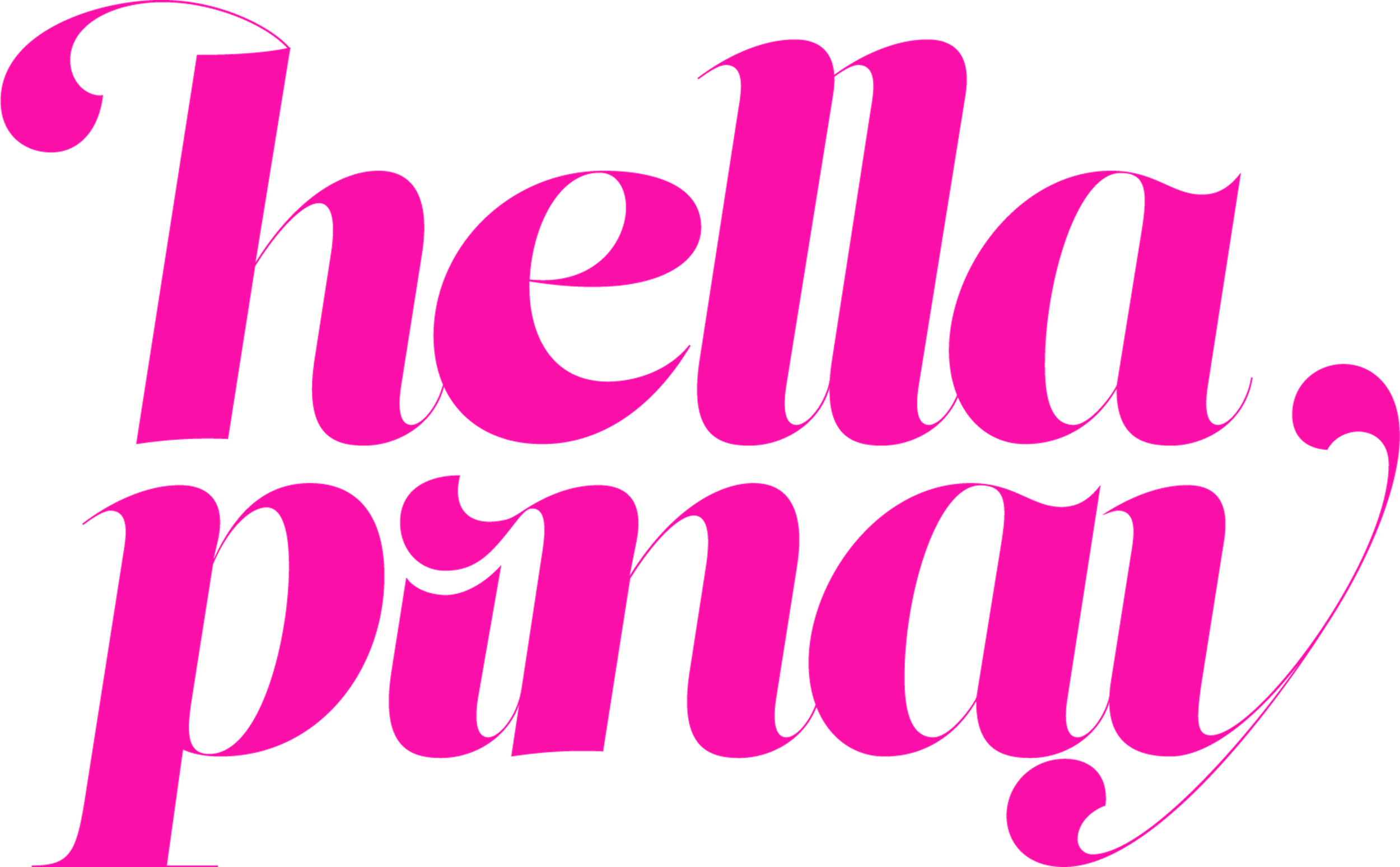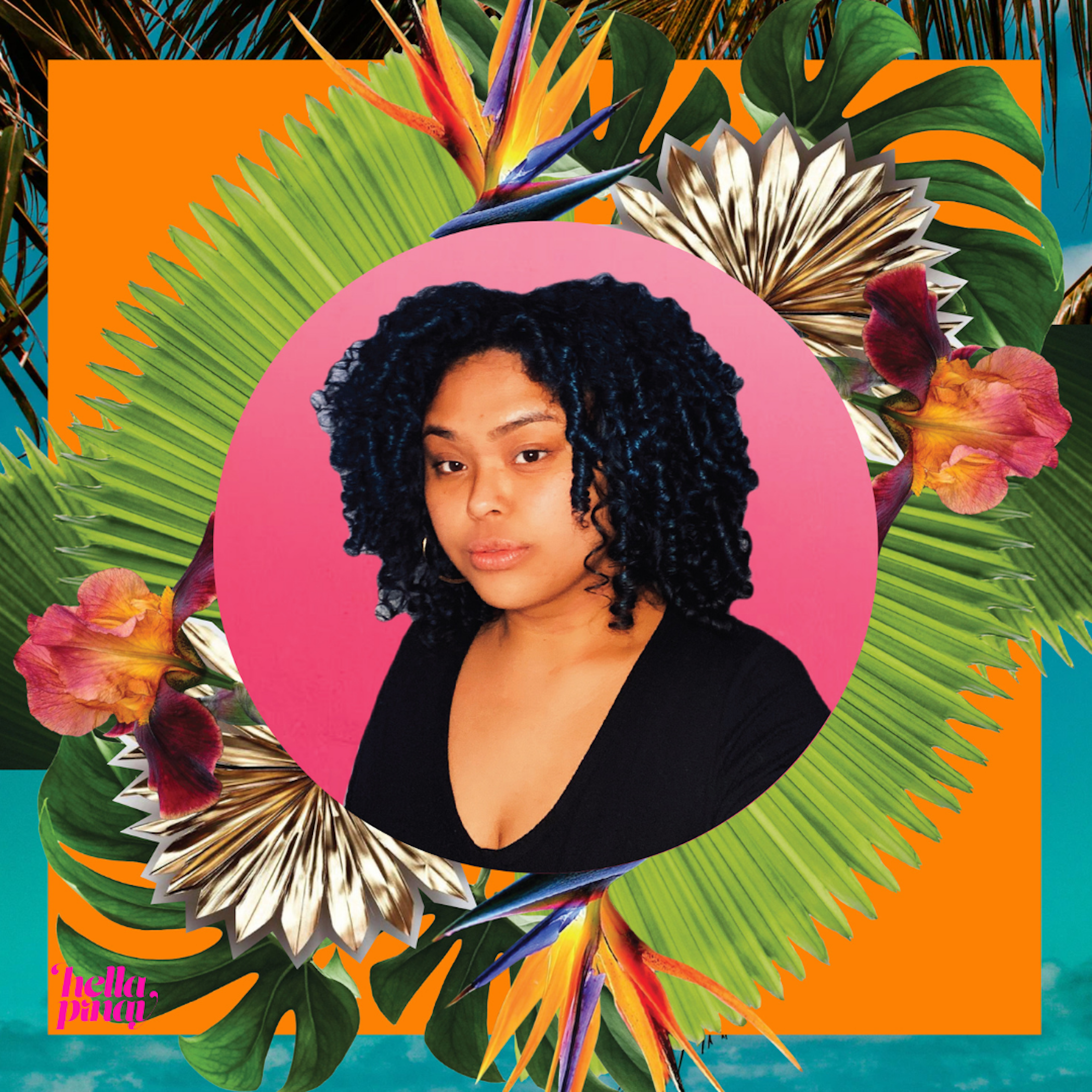Filipinas With Curly Hair (& Other Phrases I've Googled)
Illustration by Agnes Ito for Hella Pinay / All photos courtesy of the author
Born to two Filipino parents in August of 2000, I popped out of the womb completely and utterly bald. There was not a single piece of hair on my head, and I spent my first two years of life wearing floral hats and headbands to show the world that I was, indeed, a girl whose nickname happened to be Max.
My hair began to grow in by the time I was two and a half, and like my mother’s, it was so silky and straight that there was no need to even brush it. My ponytails would constantly slip out, since no hair tie was small enough to hold up my thin strands of hair. For the next six years, my life was simple and easy; I would roll out of bed every morning before school, run my fingers through my hair, and be on my way.
This quick routine was no longer realistic as I got older. My hair became thicker, almost overnight, and each morning I found it more difficult to run my brush, much less my fingers, through the knots and tangles that appeared out of nowhere.
As I grew older, my hair grew bigger, frizzier, and thicker, and by the time I was eight, I was crying and fighting with my mother over styling my hair before school. If I didn’t let her yank and tug at my hair with a comically large paddle brush, I would be forced to walk around school with a huge ball of frizz on my head, and my classmates would never forget to remind me how awkward I looked.
And while jokes like “cotton ball” followed me around during recess, the worst of the teasing came from my family. My cousins with the “typical straight Asian hair” would throw pieces of paper into my giant frizz ball and laugh. My grandmother, who was fair-skinned and always kept a perfect, short bob, constantly nagged me and complained about my dirty, unacceptable hair. “It looks like you don’t brush it or shower,” she scolded, “you look ugly, like a baluga.”
My grandmother, like many older Filipinos, also used the term baluga to describe dark-skinned individuals in the Philippines and folks of African descent, and in turn, typically used it as an insult. This was my first run-in with not only the racism and anti-Black sentiment that is ingrained in a lot of Filipinos and other Asian groups, but also the colonial mentality and self-hatred that is internalized in the Pilipinx community.
This colonial mentality and hatred of non-Eurocentric features followed my family from the Philippines and was reflected onto me as my grandmother continuously berated my huge, frizzy hair. I spent many nights brushing and brushing it, like my grandmother advised, and to my disappointment, my hair did not come out straight.
When I turned twelve, I discovered the flat iron, a hot but magical device that turned my giant, unmanageable ball of fluff into perfect, straight hair. I was so elated with the outcome of my first flat iron that my parents gifted me one for my birthday, and I spent hours straightening tiny sections of hair and hearing them sizzle as they fell flat. The flat iron was my dream come true, and when I showed my grandmother the results, she simply smiled and called me maganda.
I spent the next five years of my life straightening my hair. Day after day I would wake up hours before school to run the flat iron over my hair at the highest heat possible. After a year, my ends began to break off and my hair stopped growing, but I didn’t care. I finally had the silky straight hair that I had wished for on every single birthday candle, dandelion, and shooting star.
During my junior year of high school, I became so overwhelmed with AP classes and work that I didn’t have time to straighten my hair. I was so tired in the mornings that I would throw my hair up into a bun or ponytail and go, and eventually I went weeks without touching my flat iron. As I continued to go heat-free, my hair grew past my shoulders for the first time in years, and I was shocked to see little waves appear in my hair. This revelation occurred at the beginning of 2017, and it marked the beginning of my natural hair journey.
Eventually, I stumbled across the natural hair movement on YouTube, a space where Black creators used their platforms to teach others how to love and care for their natural hair. Because the representation of textured hair in the Pilipinx community is close to none, I turned to other communities to learn about my own hair. I’d like to make it very clear that I would not be here, telling my story about my natural hair, without the Black community, specifically Black womxn.
After watching endless videos about wash and go’s, deep conditioning tips, and big chops - I’ve not only embraced my hair, but I’ve learned about the deep connection between my natural texture and the history of the islands that came to be called the Philippines. I have since concluded that my big, curly hair was not a fluke; my dark-skinned, curly and coily-haired ancestors gifted me a head full of texture that contained hundreds of years of history and untold narratives.
Now that my hair is fully natural, people often come up to me and compliment my curls; and after years of teasing and insults, I truly don’t mind. But every compliment is usually followed with “Where are you from?” or “What ethnicity are you?” and my answer always seems to be a surprise. “You can’t be full Filipino!” they say, as if I’m breaking all of the specific rules that every Filipinx individual must abide by. I’ve even had some people tell me to prove it, and I’ve had to recall the provinces my family came from in order to validate my Pilipinx identity.
I also found myself Googling phrases like “Filipinas with curly hair,” or “Filipinos with textured hair,” trying to find another Filipinx individual I could relate to, one that could validate my experience as a curly full-Filipina. Unfortunately, I was only able to find links to Filipino-textured hair for weaves/extensions. It wasn’t until years later, when I started college and entered Pilipinix/Pilipinx-American spaces, that I found other folks with curls and stories like mine.
As I broadened my worldview and began to take up space in organizations that I once hesitated to enter out of a fear of judgement or rejection, I realized that this distaste for spiraling, voluminous, eye-catching hair was not a sentiment unique to my family. It was a condition of the Pilipinx community, ingrained into generation after generation as a result of years of colonization and forced assimilation.
I sometimes think back to how frustrating it was to despise what grew naturally out of my head, a part of me that I couldn’t change without permanently damaging both my hair and the perception I had of myself. But it’s also why my natural hair journey and my curls mean so much to me, and why I consider it a huge part of my identity. My hair has changed so much since I’ve started to pour love into it, and I realized that, in some ways, my curls are a reflection of myself. If you try to fit into a mold that isn’t meant for you, you’ll miss out on the potential to grow into something more beautiful than you could’ve ever imagined.
Maxine Dimalanta
Maxine Dimalanta (she/hers) is a third-year Education & Social Transformation major at UCLA. Currently residing in her hometown of the Bay Area in Northern California, she spends most of her time imagining a more equitable K-14 public education system, as seen in her work as Access Coordinator of Samahang Pilipino and Chairperson of the UCLA Student Initiated Outreach Committee. When she's not in class or leading student-run projects committed to higher education accessibility, Maxine is working part-time at Peet's Coffee or trying out new hair products. She one day hopes to create policy to close the educational opportunity gap or open up her own textured hair salon.













